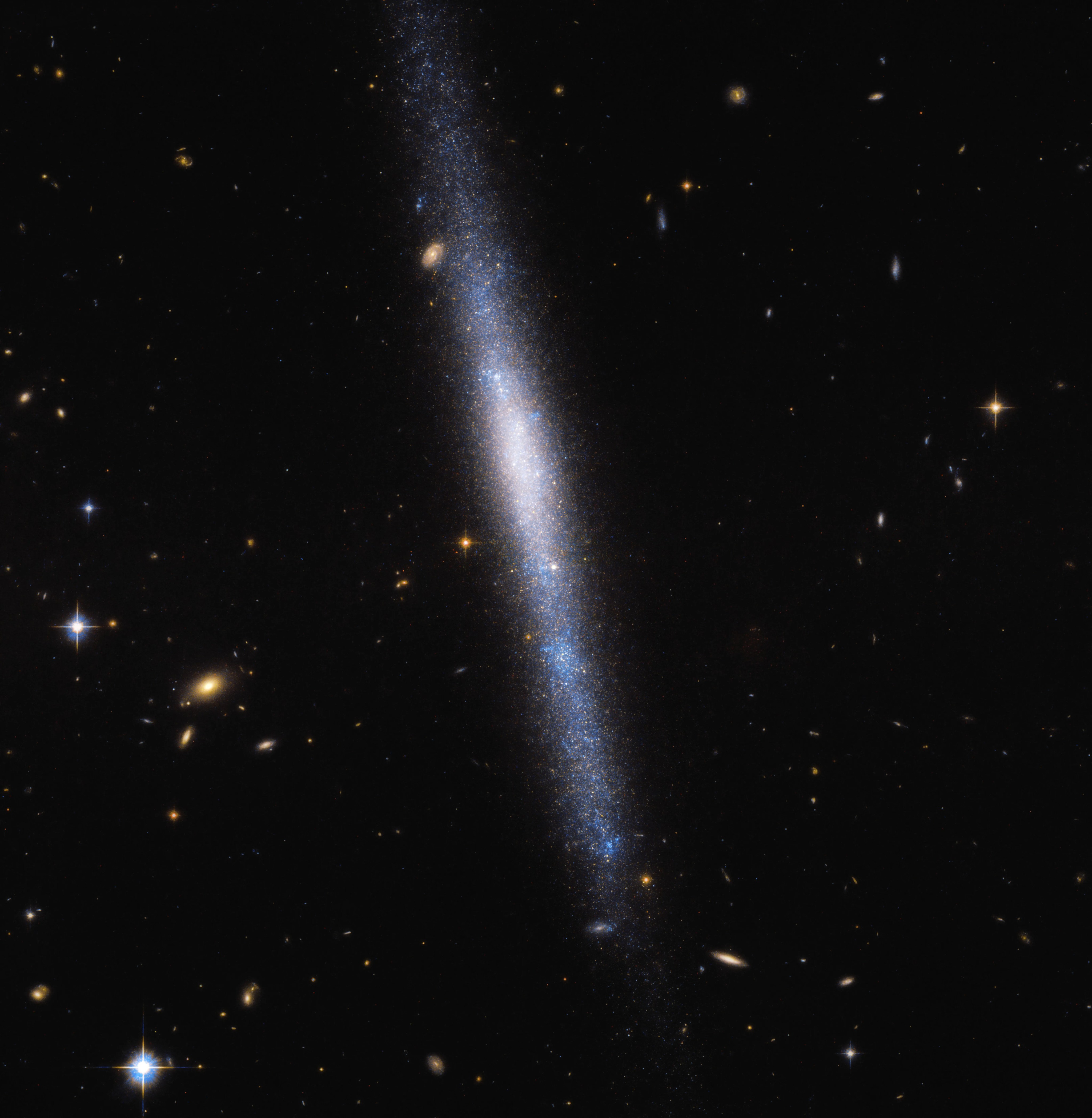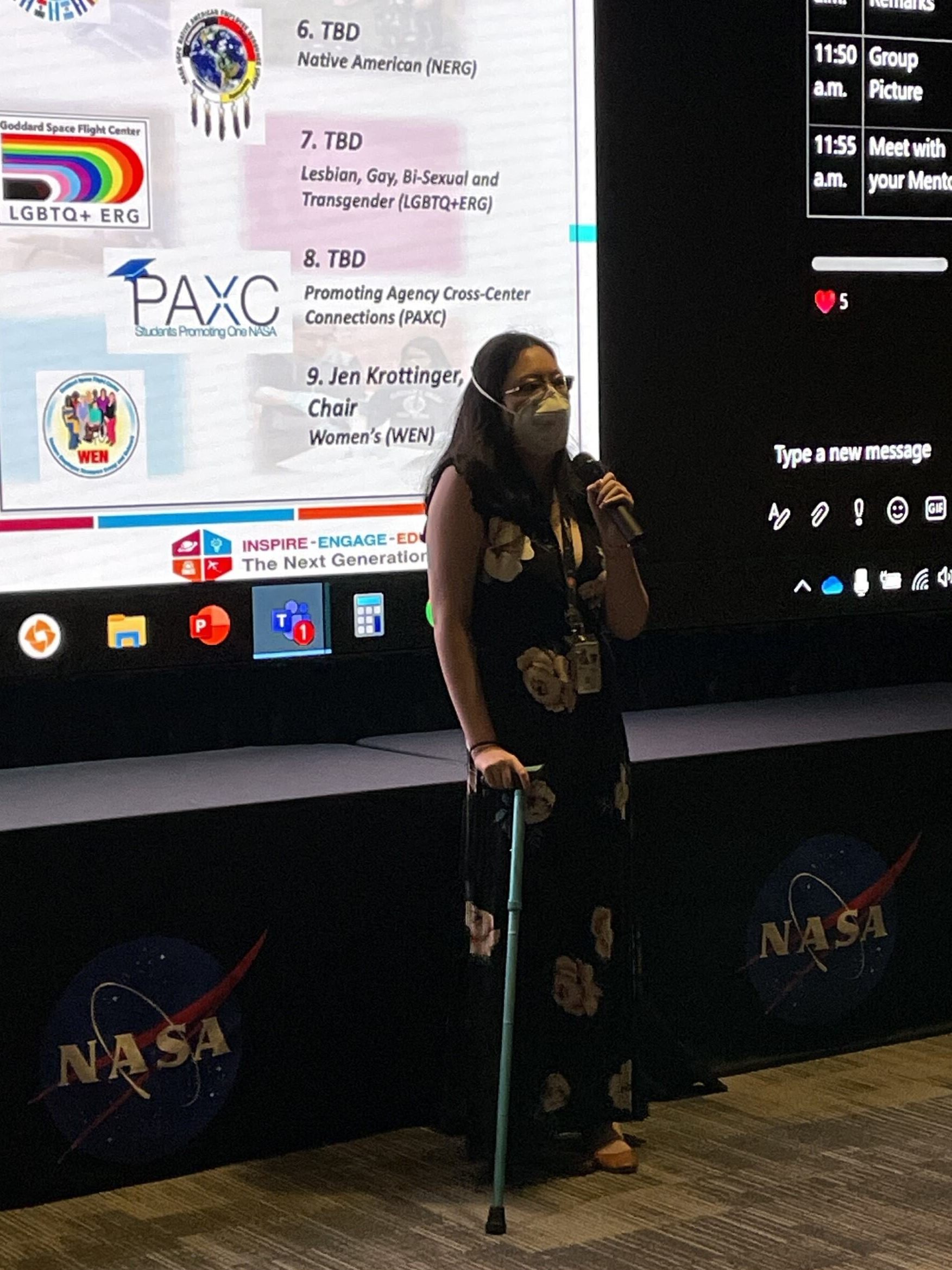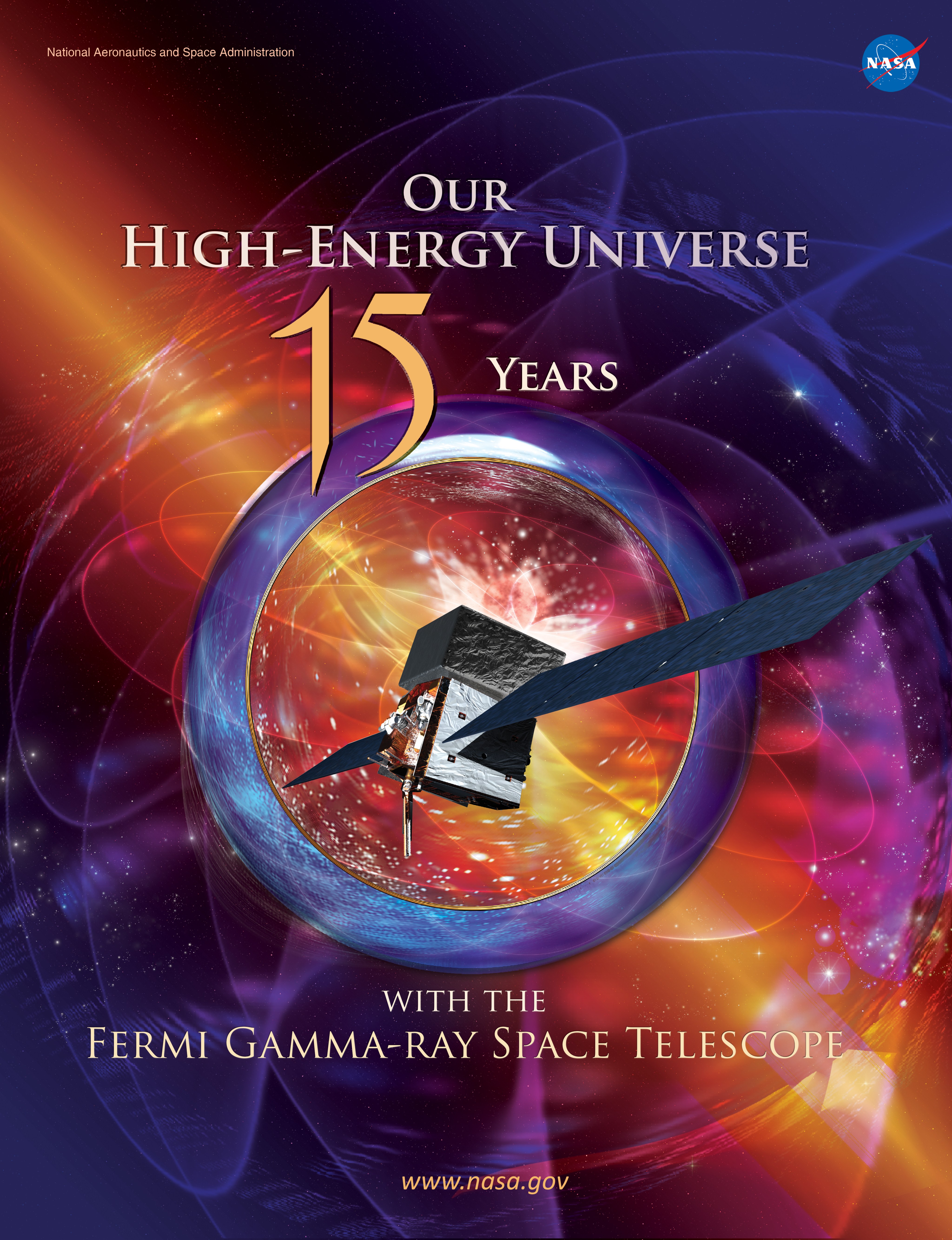1 min read

Credit: ESA/Hubble & NASA, R. Tully; Acknowledgment: Gagandeep Anand
The galaxy UGCA 193, seen here by the NASA/ESA Hubble Space Telescope, is a galaxy in the constellation of Sextans (the Sextant). Looking rather like a waterfall, UGCA 193 appears to host many young stars, especially in the lower portion of this view, creating a striking blue haze and the sense that the stars are falling from “above.”
The blue color of UGCA 193 indicates the stars that we see are hot — some more than six times hotter than our Sun. We know that cooler stars appear to our eyes as redder, and hotter stars appear bluer. A star’s surface temperature and color are also linked to its mass, with heavier stars “burning” at higher temperatures, resulting in a blue glow from their surfaces.
Text credit: European Space Agency (ESA)
Share
Details
Last Updated
Oct 04, 2023
Editor
NASA Hubble Mission Team
Contact
NASA Hubble Mission Team
Related Terms
Keep Exploring







